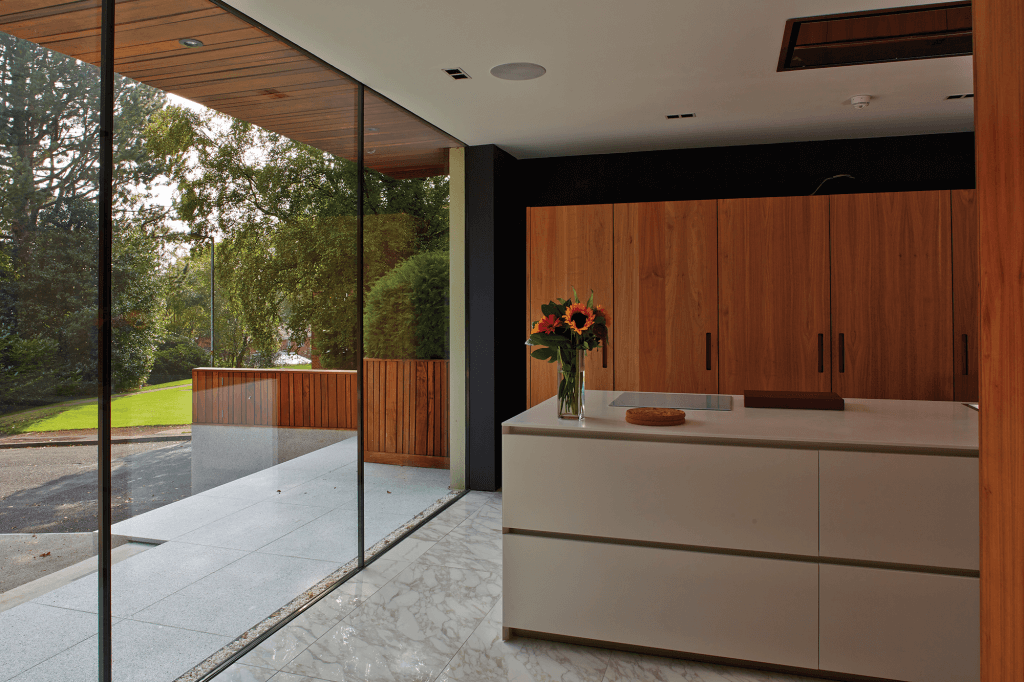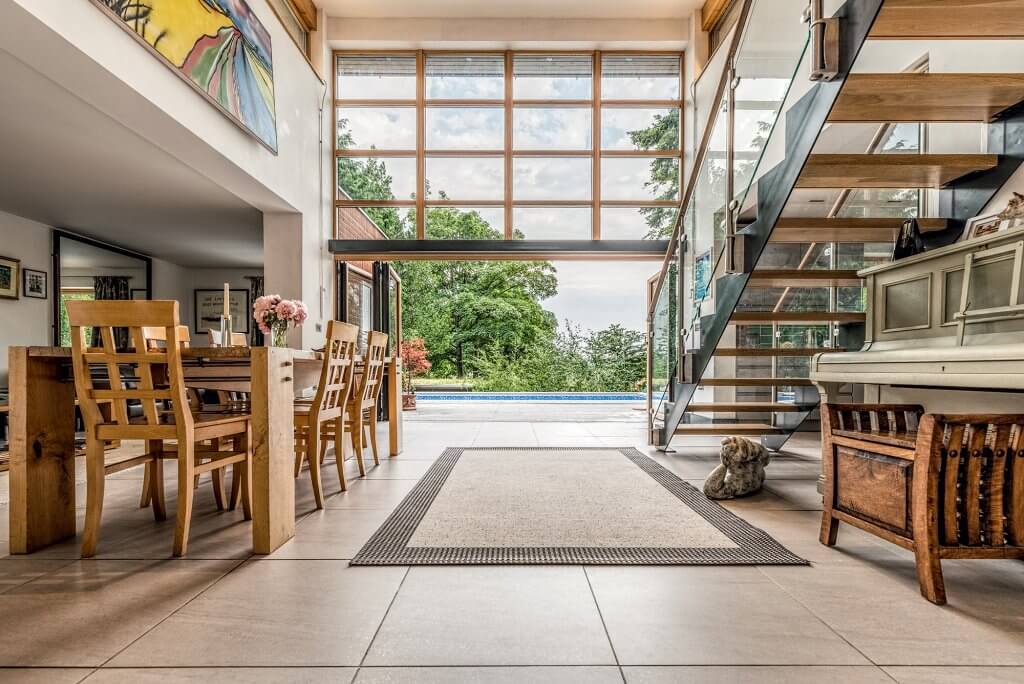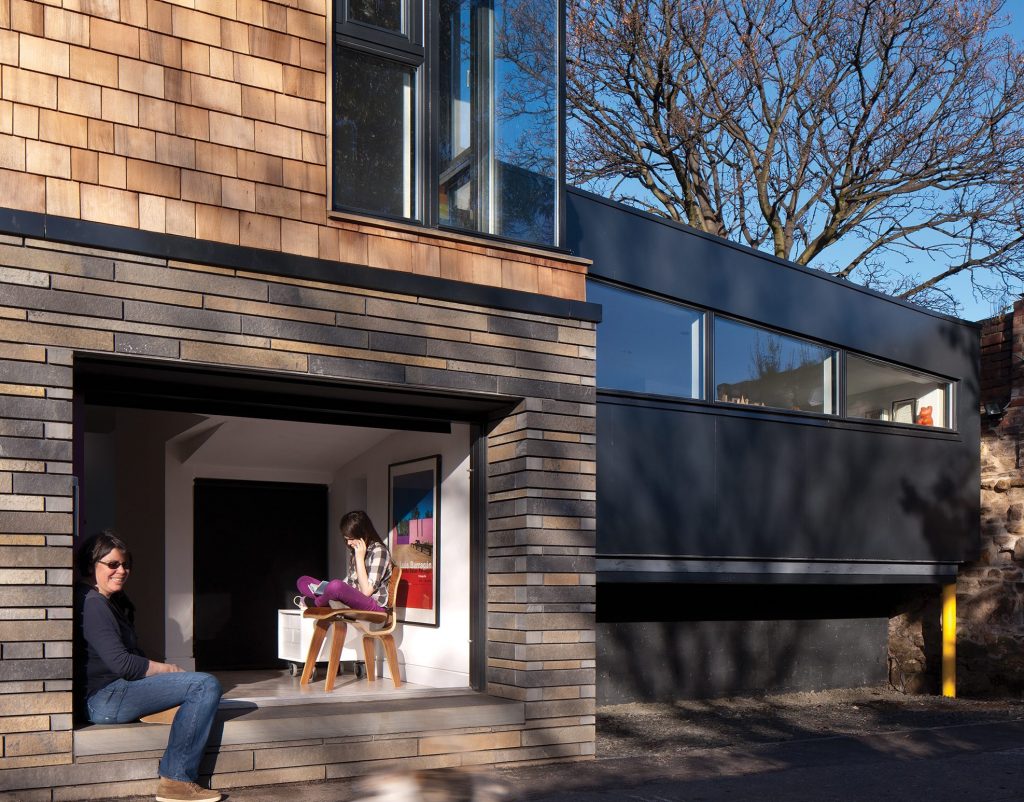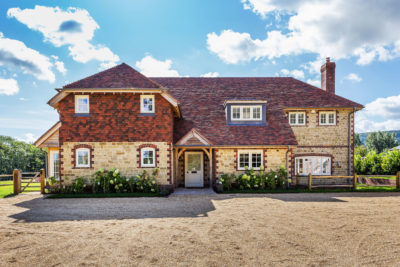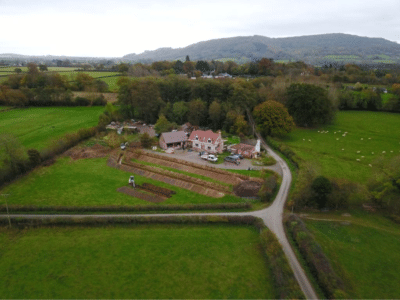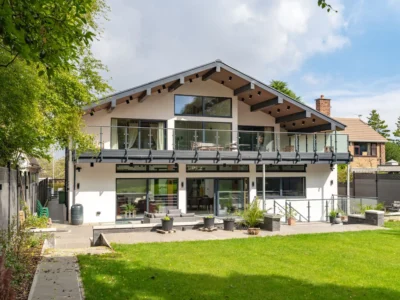Finding Land: Self Build Plot Assessment Checklist
Whether you’re keen to buy a particular piece of land or you’re eyeing up your own garden’s potential as a development opportunity, there’s a lot to consider before you can decide whether you’ve found the right site. To help you make a smart, well-informed choice, I’ve put together a building plot assessment checklist that covers most of the scenarios self builders are likely to encounter.
Armed with this guide, you can be confident you won’t miss anything crucial that could influence a site’s suitability. This includes factors such as what and where you can build, whether the costs stack up, and the chances of gaining planning permission for a design you’re happy with.
Learn more: How to Find a Building Plot: The Complete Guide
Don’t be alarmed by the length of the plot assessment checklist. On most plots, you’ll actually come across very few constraints. But taking a fastidious approach means you’ll be aware of any potential issues right from the beginning – so you can proceed with greater certainty and budget more accurately.
If you come up against anything you’re not sure about, the key thing is to seek advice from suitable professionals. That could mean speaking to your local council about planning matters, involving your solicitor for legal considerations or using other appropriate specialists. If you have an architect or planning consultant on board – or if you’re working with a package house company – they will be able to point you in the right direction.
Need more advice about different aspects of your project?Build It’s Self Build Virtual Training will give you the detailed know-how to successfully realise your dream home. Our interactive courses are presented by Build It’s expert contributors and designed to give you the key nuggets of knowledge you need – all from the comfort of your own home. Covering everything from finding land to planning permission and design, our courses take place online and allow for audience participation and experience sharing. Use the code TWENTY to gain 20% off. |
Looking at comparable planning applications for recent nearby projects, via the council’s online records, may also prove helpful. Checking these over can alert you to possible stumbling blocks, including how the hurdles were overcome and who provided the necessary reports or advice.
Plot assessment checklist
Get a solid idea of whether the site you’re considering for your self build has real potential by going through this checklist, broken down into 11 key areas. Note that some of these considerations may be more critical to your scheme’s success than others; and many of the points are equally applicable to conversion projects.
Plotbrowser.com is a great place to search for your self build site. Not only does it list thousands of genuine plots with planning permission, you can search by area, type and price, so whatever your criteria is, you can find something to suit. What’s more is that by registering for free, you will gain access to the planning information and seller’s details, who will be able to answer any queries you might have about suitability.
Site suitability
- Is the plot large enough for the size of house you wish to build?
- Are local property values in tune with the kind of design you want?
- Could any adjoining and nearby uses be bad neighbours?
- What’s the orientation like – will windows have light and outlook, and will the garden get sunshine?
- Is it a sloping site?If so, could this necessitate a split-level house or significant excavation, which may impact on construction costs. Would access be too steep for deliveries and plant vehicles?
- Are there any obstacles, such as existing structures, trees, overhead cables and underground pipes?
- Who owns and is responsible for maintenance of the boundaries
and access?
PlotBrowser.com – the quickest route to finding a genuine building plotThe latest addition to Build It’s series of powerful project tools, PlotBrowser.com is your dedicated self build land resource. You’ll find 1,000s of plots and properties to view nationwide, all with outline or full planning permission in place – including the council planning reference so you can understand whether the plot can support the kind of house you’d like to create. |
Planning status
If the plot has existing planning consent…
- Does it have full or outline permission in place?
With full consent, is the design and layout what you want to build? If outline, is there an indication in the permission as to what is likely to be approved? Should the answer to either of the above be ‘no’, then all of the points for ‘no current permission’ will apply.
- When was planning consent granted? Permission lasts for three years from that date.If the clock runs out soon, say within six months, this could present issues for a scheme that involves a redesign or discharge of planning conditions.
- Can you comply with all the planning conditions?Common requirements include council approval on external materials and/or landscaping, plus ecological surveys etc.
- Have you looked up the council’s online file for the application and read the officer’s report, along with any letters from neighbours?
The results of this could impact on any alternative design you wish to put forward for planning.
If the plot has no current planning permission…
- Is the site within a development boundary defined in the Local Plan or Neighbourhood Plan? If not, are there circumstances that could enable you to build, such as a housing land supply shortfall, or a need to live on site for farming or another rural business?
- Would a building on the plot fit in with the pattern of housing and prevailing character of the area?
- Can you build a new home without compromising neighbours’ light, outlook or privacy?
- Is the plot in a conservation area or close to a listed building? If so, would your scheme have any implications for these ‘heritage assets’? If it might, you will need a heritage statement to accompany your planning application.
- Are there any other special planning designations that could impact on your scheme, such as an area of outstanding natural beauty (AONB)?
- Have you taken advice on the likelihood of getting permission, either via the council’s pre -application service or from a planning professional?
Read more: How to get Planning Permission in a Conservation Area
Access & parking
- Is there safe access with good visibility in both directions along the principal road?
- Will there be enough space to turn a vehicle on site?
- Is there room for sufficient parking to meet the council’s standards?
If any of the above affect the site, you might need a traffic assessment to accompany your planning application.
Trees
- Are any trees on site protected by Tree Preservation Orders (TPOs)?
- Is the plot in a conservation area (where all trees are protected)?
- Would any specimens have to be felled or are any trees close to the area of your proposed build?
You may need a tree survey and an arboricultural implications assessment if any of the above apply to the site.
Ecology
- Do you intend to demolish any structures that could host bats?
- Are there ponds on or close to the site that could harbour great crested newts?
- Are there other signs of protected species, from badgers to reptiles?
If so, you will need an ecological report identifying what species are present and how they will be safely rehomed. Note that surveys can be season-dependent, which may cause delays.
Archaeology
- Is the plot within an Archaeological Notification Area? If so, you will need an archaeological assessment to accompany your submission. In some circumstances, a watching brief may also be required – whereby you pay for the excavation work to be monitored.
Contamination
- Is there any possibility of contamination on the site from former industrial, agricultural
or garage use?
If so, you will need an environmental assessment. If contamination is found, further investigations will be required to determine what it is, along with a method statement to confirm how it’s to be disposed of.
Read more: How to get Planning Permission for Brownfield Land
Flood risk
- Is your plot located within an area at risk of flooding from river, sea or surface run-off?
If so, you will need a positive flood risk assessment to support your application. Note that mitigation measures are likely to add to your build costs.
Ground conditions
- Have you consulted the council’s building control department to establish the likely soil conditions?
- Are there signs of poor ground, such as wet areas, heavy clay, soft sand or filled land?
- Could there be former mine workings in the region?
- Are there signs of current or historic subsidence in the area?
If any of the last three points apply, you will need a soil survey to determine the most suitable foundations. Should an engineered solution be recommended, this will increase build costs.
Drainage & services
- Can you connect the planned property to a public foul sewer? If not, is there enough space to accommodate a private system?
- Is there a public surface-water sewer you can connect to? If not, is there a watercourse for rainwater to drain into, or would soakaways be effective?
- Check whether the site has straightforward access to the following services:
– Water
– Electricity
– Gas
– Telephone/broadband
In each case, check the availability and cost of making a connection (as well as any temporary supplies and disconnections if you are dealing with existing services).
If a supply is unavailable, the extra cost of a site-based alternative should be reflected in your offer price for the plot.
Legal considerations
- Do you have right of access to get to the plot? You may need consent from the Highways Authority if you need to cross a pavement.
- Does anyone else have a right of way or right of access over the plot? In some cases, a third-party may own a ransom strip between the site and highway, which means you’ll need to pay them to secure an agreement for access. This should be factored into your offer for the land.
- Are there any easements (typically granting access) or wayleaves (usually to allow for services) affecting the plot? If so, do any time limits or other potential issues need to be addressed?
- Do any restrictive covenants exist that could affect whether, what or where you build?
- Are there any planning obligations (Section 106 agreements) affecting the plot? These legal agreements might be put in place to prescribe the nature of the development; or they may require that compensation be paid to the council for any perceived damage that would be caused by your scheme (such as loss of open space).
- Are there any public footpaths or bridleways that could affect your planned project? These access routes may need to be preserved, diverted or closed – and could impact on your chances of gaining planning consent.

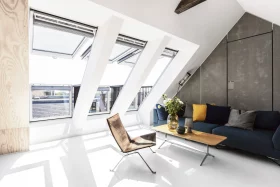


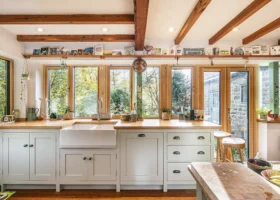














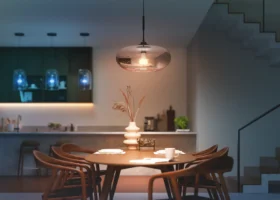
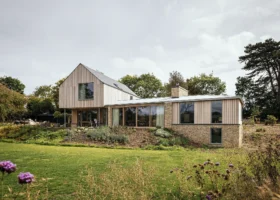

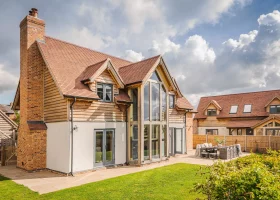
















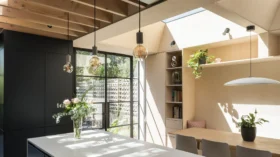


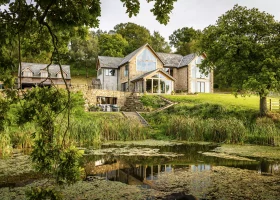
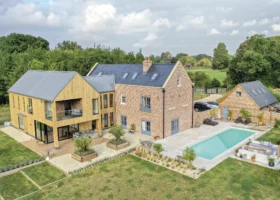

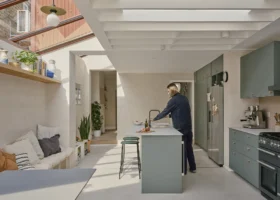
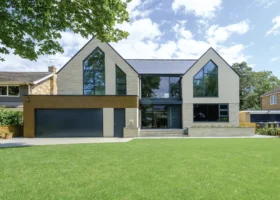






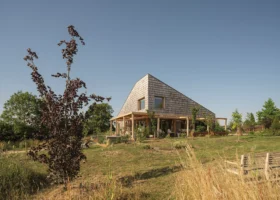




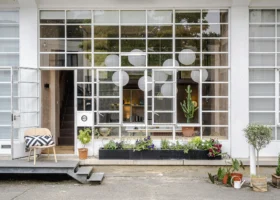
























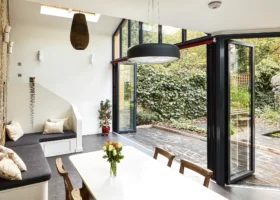














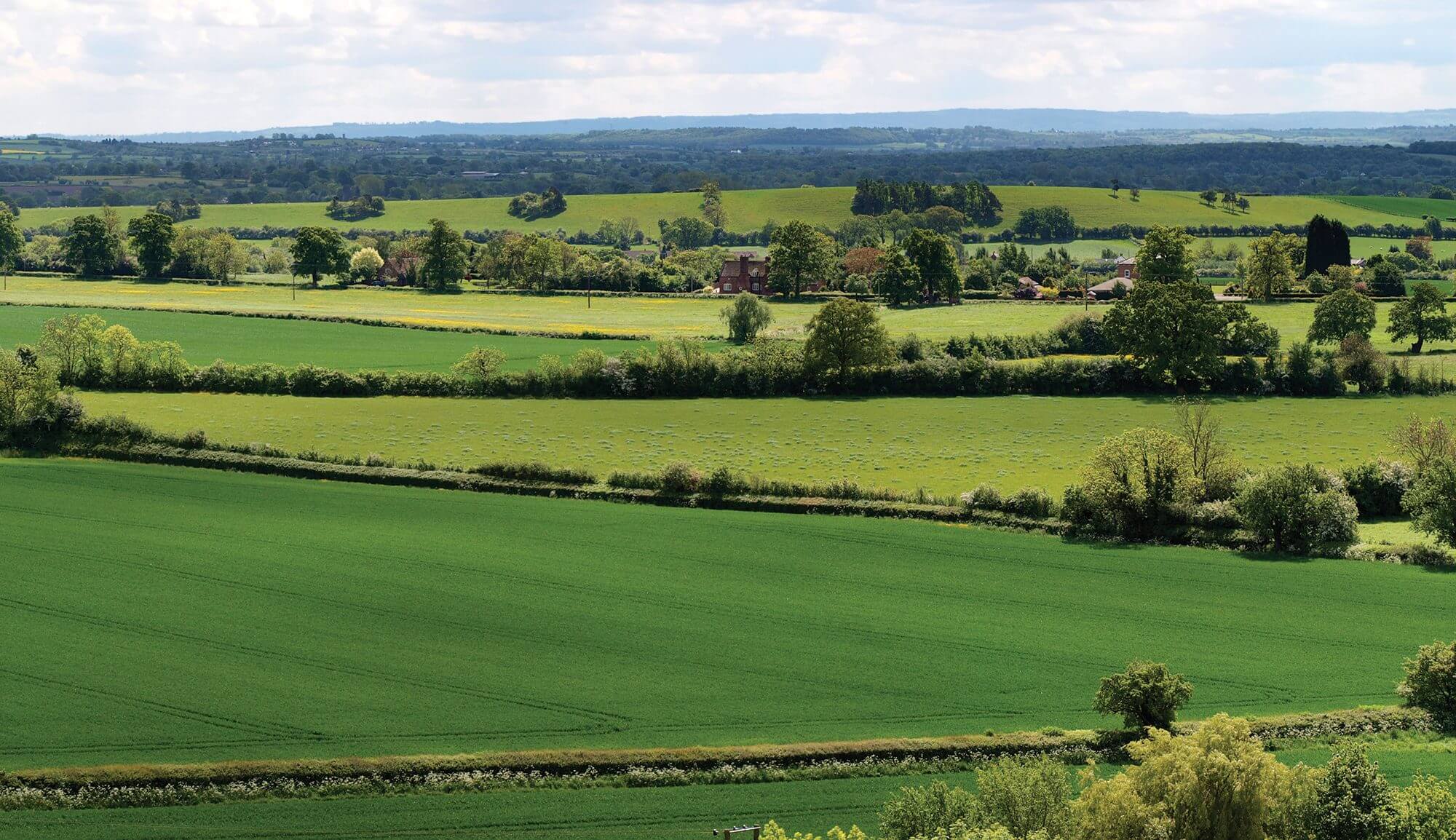
 Login/register to save Article for later
Login/register to save Article for later


